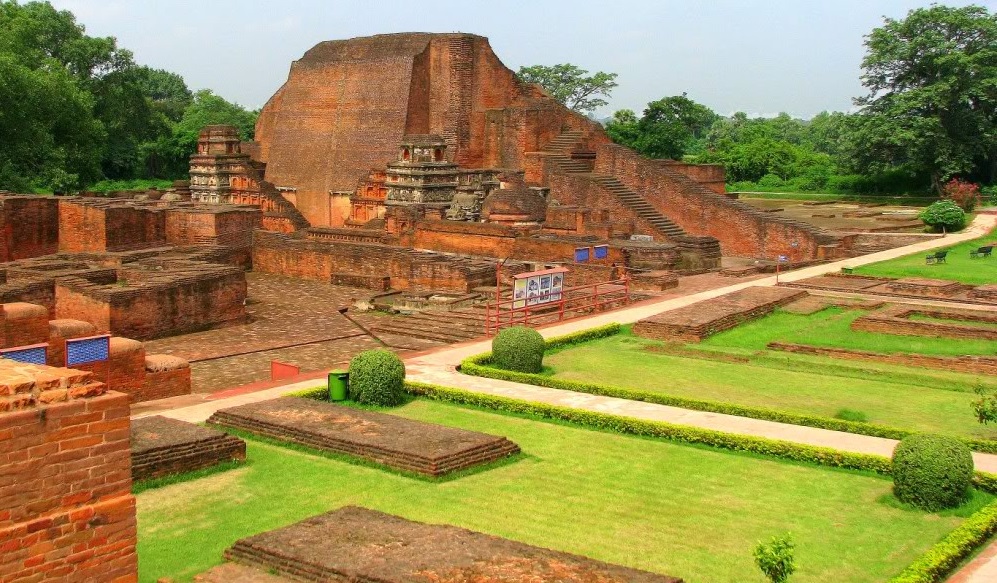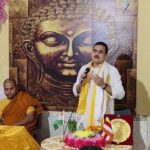NOSTALGIA MUSTN’T DEFINE NALANDA
- By : Anirban Ganguly
- Category : Articles

The study of the evolution of Indic civilisation, and how it influenced a number of spiritual movements across the world, is what a university of this kind must advance
The governing idea behind the revival of Nalanda University should not merely be to promote ‘international understanding’, which in any case means a vague-nothing that allows projects to flounder or to be besieged with ideas and intentions that eventually cloud the founding ideal of any such efforts. In any case, the promotion of ‘international understanding’ has been done in the past by India, especially in her Nehruvian heydays, without any tangible returns or takeaways. Nalanda is indeed about nostalgia, but a nostalgia that needs to be rooted in pragmatism, hard strategy and a determined implementing machinery that aspires to see India regain her cultural and civilisational foothold, first, in her immediate neighbourhood and then gradually the world over.
In order to truly impart such a project with a civilisational vision and direction, the first imperative is to extract it from the clutches of an academic and intellectual coterie which is, at best, shallow in its knowledge of the Indian soul and spirit and, at its worst, has been at the forefront of perennially misrepresenting India or tweaking the reading of her polity and civilisation to suit certain interested sections. Certainly such a grand vision cannot be left to the whims, tantrums and dictates of a single individual, however decorated or celebrated.
It is no one’s case that Nalanda be developed into an exact replica of its more famous past avatar that would, in any case, be impossible in the present age of a deficient cultural and civilisational vision and understanding, especially among a section of our present policymakers. But a certain physical resemblance and a certain similarity in approach and spirit can truly impart it a unique identity. Simply burdening it with sundry subjects in the name of modernity or of internationalism will defeat the actual vision of the effort. For Nalanda, if it is to rise again as a principal centre of learning should have the capacity to offer some direction, some alternate approaches to the study of India, to the understanding of her myriad cultural-intellectual manifestations and more importantly to the understanding of her past stature and future potentialities as a world-power.
Nalanda and a number of other established universities of that epoch essentially signified and symbolised India’s world reach. It was a world reach which ensured the extension of Indian civilisation in all directions overcoming the mightiest barriers of the old world. These institutions of higher learning were centres which united, no subject seems to have been discarded, no pupil rejected on account of belief and some of the greatest patrons of these centres were Hindu kings who generously supported these great and multifaceted efforts. Studies of the past Indian polity, in an actual light and not under the influence of the spirit of deconstructionism, ought to become one of the major areas of studies in the course of years in such an institutional of learning.
The study of the evolution of Indic civilisation, of the evolution of Indic thought, its worldwide spread and how it influenced and shaped a number of religious and spiritual movements and trends is what a university of this kind must advance, institutionalize and give scope to. Through the growth of such a framework of study and research can such an institution eventually shape the study of India in a greater manner and in course of time spawn other institutions that shall further this study from an Indic perspective. A generation of young scholars must be allowed space to train to themselves in such institutions in order to lay a sound foundation for the study of India.
In the Indic civilisational memory Nalanda survives as an enduring symbol of the perpetual struggle between civilisation and barbarism. It is this fundamental aspect of its symbolism that needs recognition, the present academic coterie however, has displayed a limited understanding and appreciation of such a symbolism and of such a grand vision.

















